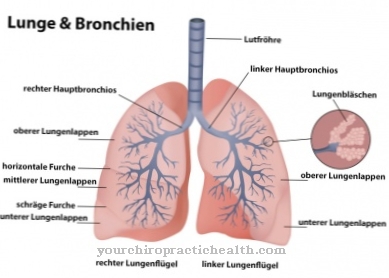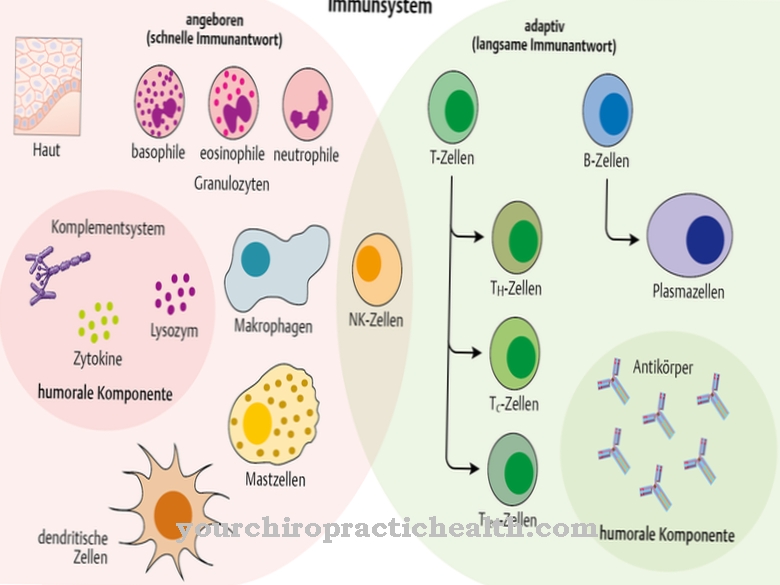The Language center consists primarily of the Wernicke and Broca areas in the cortical area of the cerebrum and the frontal lobe convolutions. While the Wernicke area is responsible for semantic language processing, the Broca area is primarily responsible for syntactic and grammatical language production. Damage caused by inflammation or bleeding in one of the areas manifests itself in speech comprehension or speech production disorders.
What is the language center?
The sensory language center is a cortical area of the cerebrum and lies within the parietal and temporal lobes. These brain areas are also known as Wernicke and Broca areas. They serve the semantic processing of language as well as the morphological and syntactic language production.
In the Broca area, primarily the production of syntax and other grammatical aspects of language takes place. The Wernicke Center, on the other hand, is primarily responsible for recognizing the meaning of sentences and words. Only the cooperation of the two areas enables speaking and understanding. Until the 20th century, medicine adopted the language centers of the Wernicke and Broca areas as the only language-processing and language-producing brain regions. This assumption has now been disproved. Many other brain regions take on supporting tasks in the structural and content processing and production of language.
Anatomy & structure
As a sensory language center, the Wernicke Center is the heart of human communication skills. It lies on the dominant hemispheres of the cerebrum. It extends from the dorsal part of the superior temporal gyrus over the angular and supramarginal gyri and thus extends beyond the parietal lobe. For right-handers, the Wernicke area is in the left hemisphere.
For left-handed people, it can be in either the left or right hemisphere. The sensory language center encompasses three Brodmann areas. These are areas 22, 39 and 40. Areas 39 and 40 correspond to projection centers and association areas that are involved in language production and language processing. In addition, areas under the cerebral cortex, such as the putamen and caudate nucleus, are involved in language processing. The putamen belongs to the gray matter of the brain. The caudate nucleus is primarily responsible for controlled, voluntary movements. In addition, auditory processing areas are networked with the language center and are relevant for language production and processing.
The Wernicke area has afferent entrances to the primary auditory cortex. The angular gyrus also connects the speech center with the secondary visual cortex. With the aim of semantic language articulation, the sensory language center is also reciprocally connected to the motor language areas, i.e. the Broca areas. This connection largely corresponds to the arcuate fasciculus. Unlike the Wernicke center, the Broca area is located in the frontal lobe and is also closely related to the Wernicke center.
Function & tasks
The function of the sensory language center is primarily language understanding. The semantic processing of speech and text content takes place in these areas of the brain. But the language center also takes on a task in the arbitrary articulation of certain semantic contents. The speech motor centers of the cortex are mainly responsible for the articulation of semantic language content. But they are networked with the Wernicke Center. A speech reaction to external stimuli can thus take place.
Above all, the centers of hearing and seeing are connected to the language centers. Therefore auditory and visual stimuli can trigger certain linguistic reactions. Language is built in the Broca area. That means, as soon as the Werenicke area has grasped the expressiveness of a conversation partner, it reacts with a semantic reaction. This semantic reaction is implemented syntactically and morphologically in the Broca area. Communication between the individual areas takes place via projection.
Nerve connections thus take on an important task in the production of speech in response to perceived stimuli. Without the sensory language center, humans would no longer be able to understand utterances. On the other hand, he could no longer make any meaningful statements about certain facts or situations. A disturbed connection between Broca and Wernicke areas, for example, no longer allows correct sentence utterances.
You can find your medication here
➔ Medicines to improve concentration and language skillsDiseases
Damage to the Wernicke area is mainly expressed in impaired speech understanding. A so-called Wernicke aphasia develops. This is a language weakness that is primarily due to a lack of language understanding. This form of aphasia corresponds primarily to receptive aphasia. Despite fluent spontaneous pronunciation, the language is empty in terms of content.
Often, patients with Wernicke aphasia break off in the middle of a sentence, duplicate words or reinvent words. Depending on the exact localization, the damage to the Wernicke area is also associated with paraphasia. In this case, the empty flow of speech hardly breaks off. Damage to the Broca area, in turn, results primarily in language production disorders such as incorrect grammar. In most cases, a stroke is responsible for damage to the language centers. In particular, strokes in the flow area of the arteria cerebri media can lead to impaired speech understanding. Under certain circumstances, however, the phenomenon is also related to a degenerative disease.
The tissue-destroying diseases Parkinson's and Alzheimer's can also affect the Wernicke Center, for example. The same applies to the autoimmune disease multiple sclerosis. On an MRI, aphasia usually manifests itself in lesions of the Wernicke center or Broca's area. Nerve conduction rate tests may help determine whether the cause is stroke, inflammatory disease, or degenerative disease. In rare cases, a tumor can also cause failure of the speech center.



.jpg)























